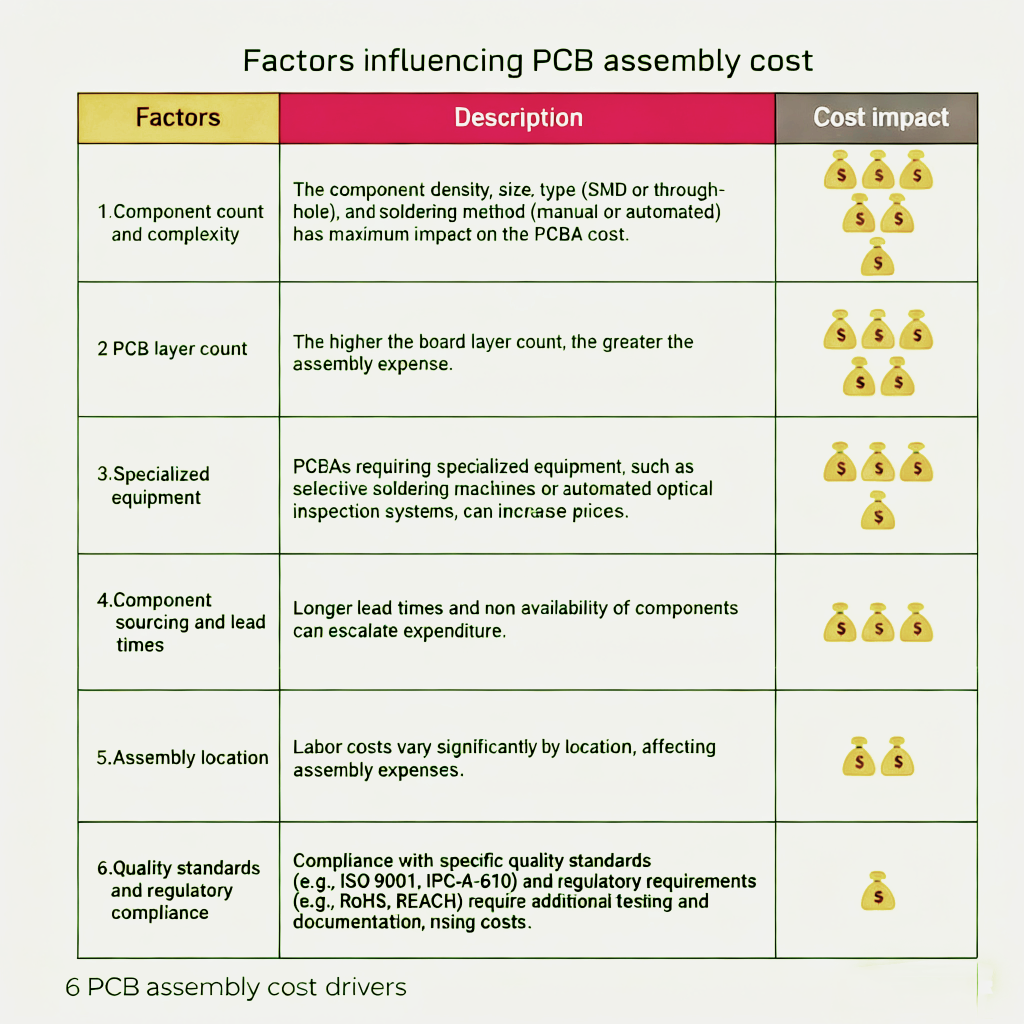PCB Assembly Cost reduction hinges on standardized design, optimized component selection, adaptation to automated production, while avoiding additional processes and supply chain risks. This is a long-term challenge for designers and manufacturers aiming to control PCB Assembly Cost efficiently.
1.Standardize Component Selection to Cut Down PCB Assembly Cost and Extra Expenses
- Prioritize passive components with common packages such as 0201, 0402, and 0603 to simplify the supply chain and lower procurement costs, a direct way to cut down related expenses.
- Choose RoHS-compliant components to avoid reballing or mixed assembly expenses for non-RoHS components (e.g., BGA).
- Select component parameters based on actual needs, avoiding over-specification (e.g., choosing resistors with wide tolerances when high precision is unnecessary) to reduce procurement premiums.
2.Optimize Design for Automated Assembly
- Define clear component boundaries and standardize pad sizes and spacing to minimize errors in automated assembly and costs associated with manual intervention.
- Prioritize Surface Mount Devices (SMD) to adapt to automated production lines, improving efficiency and reducing labor costs.Replace single-function devices with multi-functional circuits to reduce the total number of components and simplify the assembly process.
3.Supply Chain and Procurement Management to Mitigate Risk Costs
- Verify component availability and lead times, prioritizing off-the-shelf and short-lead-time products to avoid delay costs caused by stockouts.
- Add alternative part numbers to the Bill of Materials (BOM) to address shortages of key components, saving time on alternative approval and redesign costs.
- Choose tape-and-reel packaging for high-demand components to reduce unit costs of packaging and assembly.
4.Avoid Unnecessary Process and Rework Costs for PCB Assembly
- Adhere to industry standards such as IPC-7351 in design to ensure pin layouts match components, reducing poor soldering and rework.
- Clearly mark “Do Not Install (DNI)” components to avoid redundant assembly processes.
- Do not mix RoHS and non-RoHS components simultaneously to avoid high process costs of mixed assembly.
